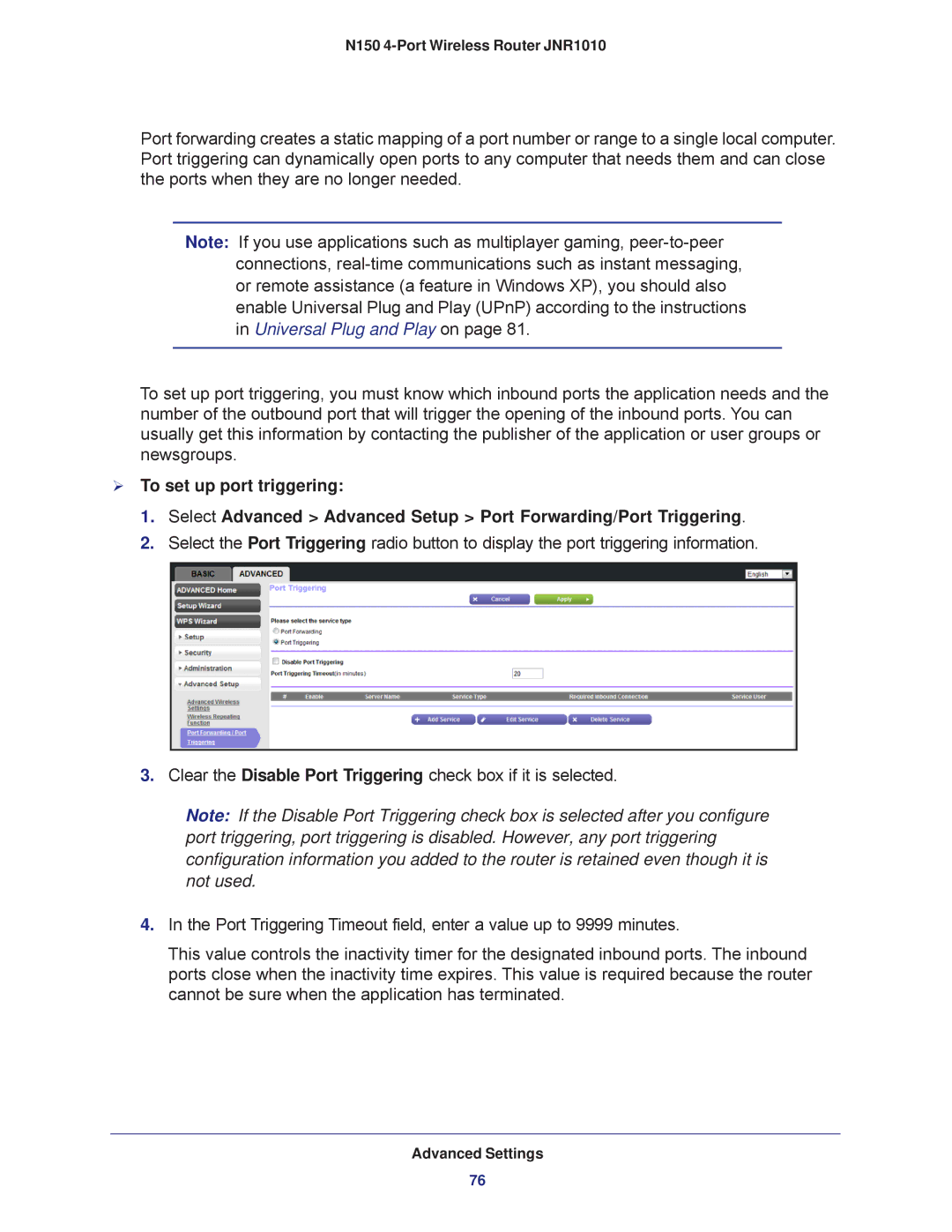
N150 4-Port Wireless Router JNR1010
Port forwarding creates a static mapping of a port number or range to a single local computer. Port triggering can dynamically open ports to any computer that needs them and can close the ports when they are no longer needed.
Note: If you use applications such as multiplayer gaming,
in Universal Plug and Play on page 81.
To set up port triggering, you must know which inbound ports the application needs and the number of the outbound port that will trigger the opening of the inbound ports. You can usually get this information by contacting the publisher of the application or user groups or newsgroups.
To set up port triggering:
1.Select Advanced > Advanced Setup > Port Forwarding/Port Triggering.
2.Select the Port Triggering radio button to display the port triggering information.
3.Clear the Disable Port Triggering check box if it is selected.
Note: If the Disable Port Triggering check box is selected after you configure port triggering, port triggering is disabled. However, any port triggering configuration information you added to the router is retained even though it is not used.
4.In the Port Triggering Timeout field, enter a value up to 9999 minutes.
This value controls the inactivity timer for the designated inbound ports. The inbound ports close when the inactivity time expires. This value is required because the router cannot be sure when the application has terminated.
Advanced Settings
76
